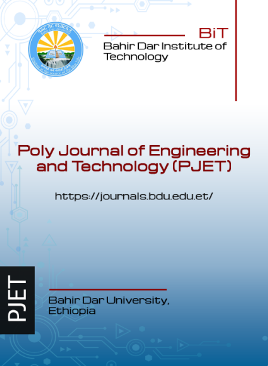WIRELESS SENSOR NETWORK NODE DEPLOYMENT STRATEGY IN THE CASE OF ETHIO-DJIBOUTI RAILWAY
Abstract
The EthioDjibouti route is a standard gauge international railway with a single track covering 639 kilometres of the total length. This paper introduced Wireless Sensor Networks for the Ethio -Djibouti route, for their advantage of low cost, ease of complexity in installation and maintenance, low energy consumption, increased line capacity, and real time monitoring data. But, depletion of nodes energy is a major concern since it creates a phenomenon called “Energy Holeâ€, which decreases the lifetime of the network. Non-uniform node deployment strategy is used to mitigate the problem of network lifetime. It is a random node deployment technique which allows non-uniform distance between nodes. And the nodes create shortest paths between neighbouring nodes to ensure data transfer between source node and destination node with reduced power consumption, which in turn minimizes the effect of energy hole. In the MATLAB computation result the optimum communication range is twice of the sensing range of the sensor nodes.
Copyright (c) 2025 Poly Journal of Engineering and Technology (PJET)

This work is licensed under a Creative Commons Attribution-ShareAlike 4.0 International License.


